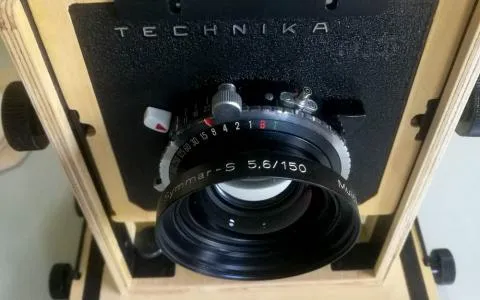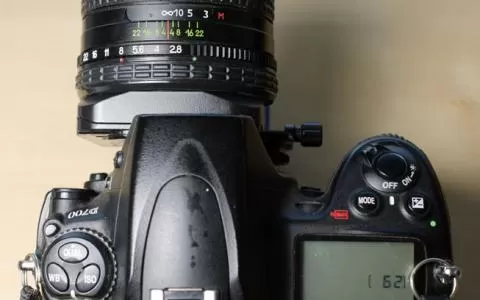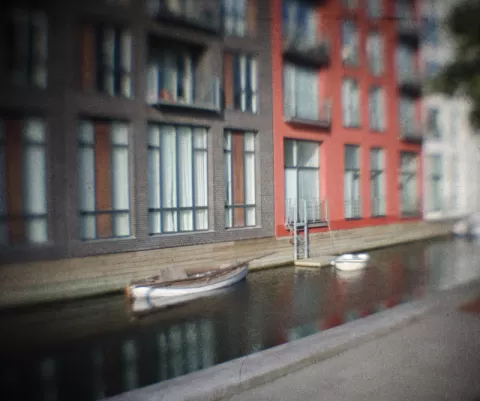Part 1: How tilt/shift lenses work and how you can use them.
I love the “miniature” look of images and videos shot with tilt/shift lenses, so I decided to get one. This is part one of an article about how it works, what I did, and what it can do.
Tilt/shift lenses can tilt and shift... duh! But what is it actually they do? This article tries to explain that. And the article tries to explain how to use them and what kind of images they enable you to shoot.
Tilt and shift does not necessarily go hand in hand. Lenses can be tilt only or shift only. Nikon has made some shift lenses called a PC for Perspective Control. Such lenses could not tilt. On the other side you have tilt-adapters that allow you to mount large format lenses on Nikon bodies or Nikon glass on 4/3 bodies and tilt them. Some of these adapters have a fixed angle, while others allow varying angles. They tilt, but don't shift.
Let's start with the tilt function.
Understanding tilt
What the lens does when the tilt-function is used is exactly that: it tilts or rotates on its long axis.
For reasons of understanding, I'm going to refer to the body or the film plane as the object that tilts, because that's essentially what happens, but because we hold the body and move the lens, we feel that we tilt the lens, but once we shoot the same subject with different tilt angles, we will notice that the lens is the stable part, and that it's actually the body that moves.
The reason that this is interesting is that it emphasizes that the sensor plane (film plane in the old days) changes in relation to the angle of the image projection created by the lens inside the camera. Altering the sensor plane in relation to the this projection and in the end the subject in front of the camera can give you one of two results:
1) a larger depth of field
or
2) a smaller depth of field
This series of images shows what the T&S lenses can do: the first image has a normal shallow depth of field due to the close distance and angle. The next two shows the tilted lens full open and stopped down giving a large DOF, and the last one shows the opposite tilt, where the DOF becomes even shallower.
To be more correct, tilting the lens actually does nothing to the depth of field, which remains the same and only depends on the aperture and lens construction. What tilting does is changing the way we utilize the part of the picture that's in focus.
Look at the accompanying illustrations and read on to try to understand why.
Parallel or not
When a lens and a camera captures an image, light reflected (or emitted) from the subject will travel through the lens onto the sensor. A flat surface such as a vertical wall will form an almost perfect image on the sensor if this is parallel to the wall, only mirrored and upside-down. All points on the part of the wall in the frame will have a corresponding point on the sensor and in the final image. The lens has been built to create a small optical replication of a plane outside the camera on the sensor. This is seen in illustration A on my crudely drawn schematics.
When you change focus you shift this focal plane back and forth in front of the camera changing the distance of what's in focus. Most lenses are able to create a satisfyingly sharp image of a wall perpendicular to the sensor.
As soon as you start taking pictures of things that are not walls perpendicular to the sensor (yes, some of us actually do that!), you notice a problem: it becomes difficult to get everything in focus at once. Simply tipping the camera away from the perpendicular angle will show the problem. Point a camera at a wall at a 45 degree angle and try to get the whole wall sharp.
Not easy.
You can stop down - increase the aperture to create a larger depth of field with more things in focus - which helps. But getting the wall from close to infinity in focus is almost impossible.
Tilt to the rescue!
What happens inside the camera when you turn it in relation to your subject is that the image projected inside the camera also turns to an angle. The opposite way actually, because the lens mirrors the image and turns it upside down. This is seen in illustration B.
In order for the image to become sharper over a larger part of the sensor, we want the sensor to be parallel to the image of the subject that the lens projects.
Now, that's pretty easy. Just tilt the camera, and they're parallel. Unfortunately this has a rather unlucky side effect, because the lens is generally firmly attached to the camera, and as you very well know, pointing the lens somewhere else changes the image! You can see that illustrated in C.
But... yes, you guessed it! We can simply tilt the lens back again to point at our subject and leave the camera in its tilted position. Mission accomplished! And that's exactly what the tilt-lens allows us to do as shown in D.
So what we do is in many ways similar to what large format photographers do with their bellows cameras. Point the lens at the subject and lock it and then move and tilt the focus screen (later exchanged with the film) to get the right sharpness and composition.
It works both ways
So in other words: the tilt-lens enables us to keep the lens pointed at the subject while tilting the sensor to get more of the projected image in focus.
It's actually quite simple... in principle at least. Tilt lenses do have a tendency to become rather complex even though the principle is simple. It does require some precise and sometimes intricate mechanics to obtain proper tilt control. Aperture and focus control is mostly manual, and only the expensive brand name lenses have electronics and some even have magnetically controlled apertures that close automatically allowing for automated exposure.
Using a thumb screw you get the tilt-lens to rotate the optics in the lens around the so called nodal point, resulting in a moving image projection on the sensor and tilting this projection at the same time.
And as you may also have guessed it works both ways. Tilting the lens one way will create a larger area with sharpness while tilting the other way has the opposite effect.
What we get
The result is that the tilt-lens can create images that are sharp beyond the normal depth of field of the lens, and this ability is favored by many types of photographers such as people shooting products, where detail is important, or landscape photographers who want a picture with sharpness from close to the lens to infinity.
By tilting the lens forward and down, or rather the camera and sensor backwards they can obtain this effect and getting horizontal surfaces sharp over a larger range.
Tilting the lens upward will have the opposite effect and create that famous miniature look. Only a narrow band of the image will be sharp as seen in illustration E, and the resulting picture will have the miniature look – so called because it resembles pictures of miniature landscapes or model railroads shot with macro lenses.
Real tilt versus fake tilt
If you search the web for articles on tilt images, you will undoubtedly stumble upon numerous tips on how to obtain the effect in your favorite photo editing program or in the camera. The technique is often referred to as fake tilt. The fake tilt effect is created by isolating a narrow strip in the image and blurring the surroundings in varying degrees. In some cases the effect can be surprisingly close to the real thing, but in the far majority of cases, the fake effect cannot deliver what the lens can, and here is why.
The manipulation of the final image will just add a couple of blurred zones on each side of the sharp one, and will not take the placement of the objects in the picture into consideration—unless you spend an unholy amount of time masking the image before blurring.
The real lens on the other hand will blur optically, and because of this everything which is outside the sharp zone—in front or behind—will be blurred, while the subjects in the zone will be sharp even though it's partially hidden behind a blurred building or treetop.
On “flat” images the fake method can be quite convincing, but in the real world it's often difficult to obtain the effect. Here's a Photoshop tutorial on the effect.
No fake increased DOF
Another very obvious advantage of the lens is that it can do what it was originally designed to which is to increase depth of field get more of the subjects in focus by physically tilting it. This can in no way be faked in software as is the case with the miniature effect.
Understanding shift
Shift is a different technology and effect. Tilting the sensor in relation to the subject has another effect known as keystone distortion. This is most predominant in wide angle images with straight, parallel lines, where these lines will tend to slant when the camera is tilted - upwards to shoot a house, trees or other vertical structures or downwards to get foreground in a shot with parallel horizontal lines away from the camera.
Some people love the effect and I personally don't mind it much, while others want houses to be rectangles and not cut off triangles and want trees to be vertical, parallel lines rather than slanting in varying degrees.
Since it's the tilting of the sensor in relation to the subject that makes the lines fall, we want to keep the sensor parallel to the subject. Again that's easy: if you are shooting vertical things, simply keep the camera level - horizontal. That will keep the sensor vertical. But as with the tilting, this also moves the lens, and suddenly we get too much street and sidewalk and too little house, or too much lawn and too little tree tops and sky.
Well, again there's a trick, and this time it's shifting the lens in comparison to the sensor. Shifting means sliding it parallel to the film plane, and involves a rail in the lens where it moves without changing angle. This will keep things straight, but move the image formed on the sensor.
We simply utilize the fact that the image circle formed by the lens is usually larger than the sensor, meaning that the lens actually does catch trees and sky, but just projects it outside the sensor. Once we shift the lens, we move the sensor into the part of the image circle, which contains our subject, but without changing the angle of the sensor in relation to the subject as seen in illustrations G and H.
Viola! The falling lines aren't falling anymore.
Perspective correction in post
Like the fake tilt you can also do “fake shift” in post. Unlike fake tilt this will leave you with a finished effect that is very similar to what the lens will do, but it will usually trim away parts of your original and may also compromise image quality because you will usually expand part of the image beyond its original resolution.
What you do is widen a part of the image to get the lines parallel - the top in the case of wanting to straighten falling lines in a house or trees - and trim off the surplus to get a rectangular image. In some cases that's a minor problem, but in many cases you will have to stretch the pixels of the part of the image you need to an extent where it costs a lot of quality.
Perspective correction can be done with some care to get rid of the worst falling lines, but a shift- or PC-lens will do the job in-camera.
There's a follow-up article about my Photex T/S Lens here.






















